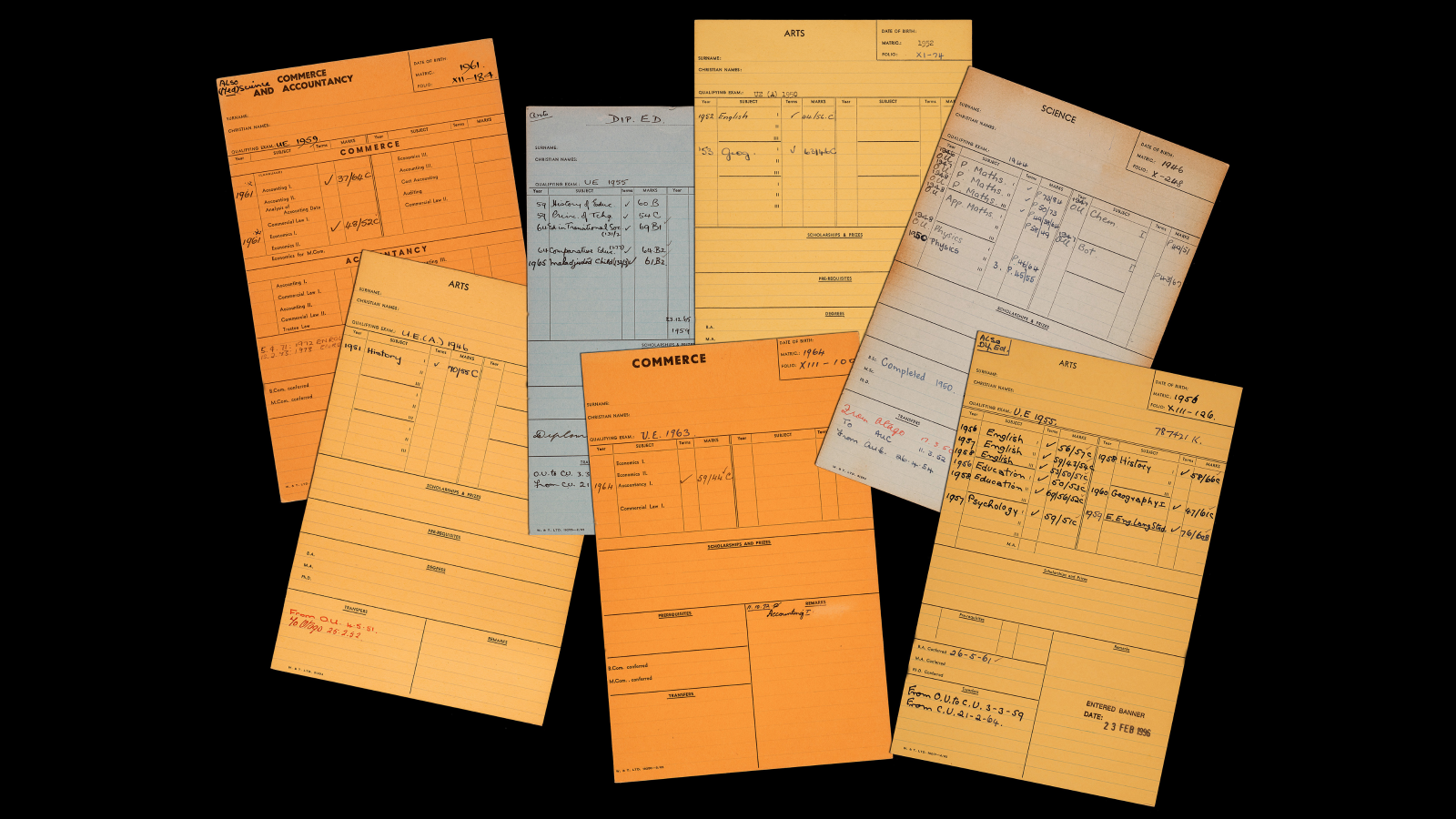
The University Archive holds the documentary history of Te Herenga Waka—Victoria University of Wellington—starting with the first Victoria University College Council minutes, to the employment agreements of the first four Professors, student records, information about our buildings, major projects, graduation programmes, publications and so on. Check out our Facebook album to view some of these gems.
The minutes, by the way, are handwritten in beautiful cursive, starting with “At a Meeting of the Victoria College Council held at the Museum on Monday 23rd May 1898” and the student records indicate courses enrolled in, colour-coded according to discipline and with passes on the front, fails on the back.
One object that resonates currently and demonstrates how much and how little has changed here is the “Victoria College Fire Watching Register 1942”.
Fire watchers were part of the response to war regulations, which included stocking up on sand, buckets, pumps and stretchers. To comply with the black-out provisions classes at night were limited, blinds and shields for electric lights were installed, and the windows and skylights painted.
The Principal, Sir Thomas Hunter, noted in his report in February 1942 that “a great deal of this work was done by our own staff”. That University staff were busy painting windows and getting ready shows that stepping up in times of crisis is something we do. And compare it to how buildings are currently protected against fire now with automated systems supported by a large contingent of volunteer floor and building wardens!
Professor F. F. Miles, a professor of Mathematics, co-ordinated the efforts and arranged the rotas. In March 1942 he reported that the original fire watching group was made up of members of staff and recommended that the group “be allowed to enlist the services of a reasonable number of full-time students not allotted other EPS (Emergency Precautions Services) work. What I have in mind here is a limited number of male and female students to act as runners, assist in stretcher bearing and first-aid-work.”
For those worried about the welfare of these enthusiastic volunteers—Council were advised in March 1942 that: “Meals for fire watchers: Professor Gould has made arrangements for some to have meals at Weir House, for others provision for light meals will be made at the College.”
Salient, a relatively newly-launched publication at that time (at only four years’ old), added to the commentary, publishing the following poem in September 1942:
FIRE WATCHING ACT, 1912 (sourced at nzetc.victoria.ac.nz)
1. Respirator.
2. 1 Belt to go round waist with ten hooks attached to carry six full sandbags and four buckets of water.
3. 1 Axe in pouch at belt.
4. 1 Stirrup pump to be carried over left shoulder.
5. 1 Ladder to be carried over right shoulder.
6. 1 Whistle to be carried in mouth.
7. 1 Longhandled shovel to be tucked under right arm.
8. 1 Coil of rope to be carried under left aim.
9. 2 Wet blankets to be slung round neck.
10. 1 Tin hat with turned-up brim in order to carry spare water and a spare sand tube to be carried in pocket.
11. 1 Dustbin lid to be attached to trouser's seat for smothering bombs by [unclear: sitting] on them.
12. 1 Box of matches to ignite any incendiary bombs that fail to ignite.
13. 1 bottle-opener to be carried in hip pocket.
Yours by Order, The Puts Outa of Fire Ministry, (Sgd.)
F.I.R.E. WOTCHA?
N.B.—The Fire Watchers Act' 1942, is not to be confused with the Acrobats' Act of 1792.
